How to fix Strong LED TV when there is no picture but normal sound?
- DDawn SmithAug 17, 2025
If your Strong LED TV has sound but no picture, try adjusting the brightness and contrast settings. Also, broadcasting failure may happen.
How to fix Strong LED TV when there is no picture but normal sound?
If your Strong LED TV has sound but no picture, try adjusting the brightness and contrast settings. Also, broadcasting failure may happen.
What to do if Strong SRT 32HA3003 LED TV has no picture and no sound?
If your Strong LED TV has no picture and no sound, check if the fuse or circuit breaker is working. Plug another electrical device into the outlet to ensure it is working or turned on. Ensure the power plug is making good contact with the outlet and verify the signal source.
Why does Strong LED TV have snowy dots, blocking and interference?
Snowy dots, blocking, and interference on your Strong LED TV can occur if the antenna is in a weak signal area. Try adjusting the position and orientation of the indoor/outdoor antenna. Also, check the antenna connection and fine-tune the channel. Broadcasting failure may also be the reason.
How to fix Strong SRT 32HA3003 when there is normal picture but no sound?
If your Strong LED TV has a normal picture but no sound, first, press the volume up button to increase the volume. If the volume is set to mute, press the corresponding button to restore the sound. You can also try changing the sound system. Broadcasting failure may also be the reason.
What causes ghosting on Strong SRT 32HA3003?
Ghosting on your Strong LED TV is caused by the television signal following two paths. Changing the direction or position of the antenna may improve the reception.
Why does Strong LED TV have bad picture/blocking error during heavy rain?
During heavy rain, your Strong LED TV may experience a bad picture or blocking errors because heavy rain attenuates satellite signals. Make sure your dish installation is up to standard to minimize rain effects.
Why does Strong SRT 32HA3003 have no colour?
If your Strong LED TV has no color, try changing the color system and adjusting the saturation. It is also possible that you are receiving a black-and-white program, so try another channel.
What causes disorderly ripples on the picture of Strong LED TV?
Disorderly ripples on the picture of your Strong LED TV are usually caused by local interference. Adjust the antenna to minimize the interference.
What to do if Strong LED TV remote control does not work?
If the remote control for your Strong LED TV isn't working, first, try changing the batteries. If that doesn't work, make sure the batteries are installed correctly. Also, check if the main power is connected.
Why does Strong SRT 32HA3003 have no signal or weak signal, intermittent reception?
A weak or absent signal on your Strong LED TV with intermittent reception might be due to loosened cables, moisture in the cables or connectors, or heavy rain/storm. Check the cable connections, LNB, and other equipment between the LNB and the receiver, or peak the dish. The satellite dish might not be pointing at the correct satellite or might be too small, or there might be obstructions. Adjust the dish, change to a larger dish, or change the dish position. If the signal is too strong, connect a signal attenuator to the LNB input.
Read all instructions before operating the set and follow safety guidelines for safe usage.
Instructions for installing the TV display on a solid surface and ensuring proper ventilation.
Explanation of the functions of each button on the TV's remote control.
Guide on how to insert AAA batteries into the remote control, noting polarity.
Steps for installing satellite channels, including satellite selection and channel search.
Guide for installing terrestrial channels, focusing on automatic search settings.
Instructions for installing cable channels, including scan type and network settings.
Settings for adjusting picture quality, including mode, colour temperature, and aspect ratio.
Detailed settings for personal picture adjustments like contrast, brightness, colour, tint, and sharpness.
Guide to performing an automatic channel scan for DTV, DVB-T, DVB-C, or Satellite.
Controls and functions for playing video files, including pause, stop, fast forward, and information display.
Read all instructions before operating the set and follow safety guidelines for safe usage.
Instructions for installing the TV display on a solid surface and ensuring proper ventilation.
Explanation of the functions of each button on the TV's remote control.
Guide on how to insert AAA batteries into the remote control, noting polarity.
Steps for installing satellite channels, including satellite selection and channel search.
Guide for installing terrestrial channels, focusing on automatic search settings.
Instructions for installing cable channels, including scan type and network settings.
Settings for adjusting picture quality, including mode, colour temperature, and aspect ratio.
Detailed settings for personal picture adjustments like contrast, brightness, colour, tint, and sharpness.
Guide to performing an automatic channel scan for DTV, DVB-T, DVB-C, or Satellite.
Controls and functions for playing video files, including pause, stop, fast forward, and information display.
| Screen Size | 32 inches |
|---|---|
| Resolution | 1366 x 768 |
| Display Type | LED |
| HDMI Ports | 3 |
| USB Ports | 1 |
| Smart TV | No |
| Aspect Ratio | 16:9 |
| Built-in Speaker | Yes |
| Power Consumption | 45W |
| Tuner | DVB-T |
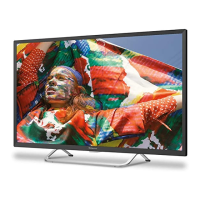
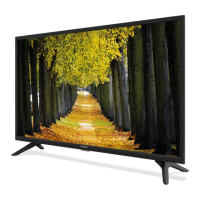
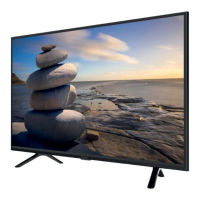

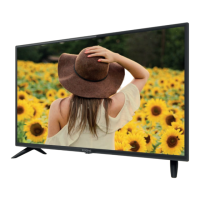
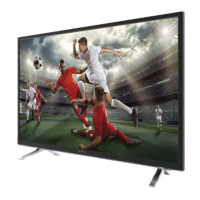

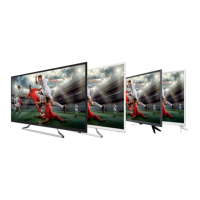
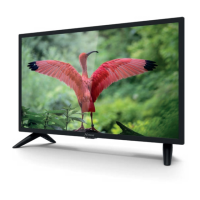
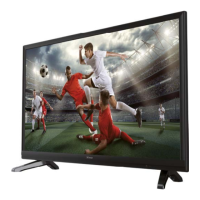
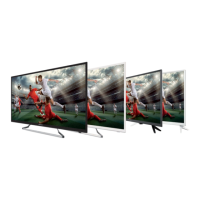

